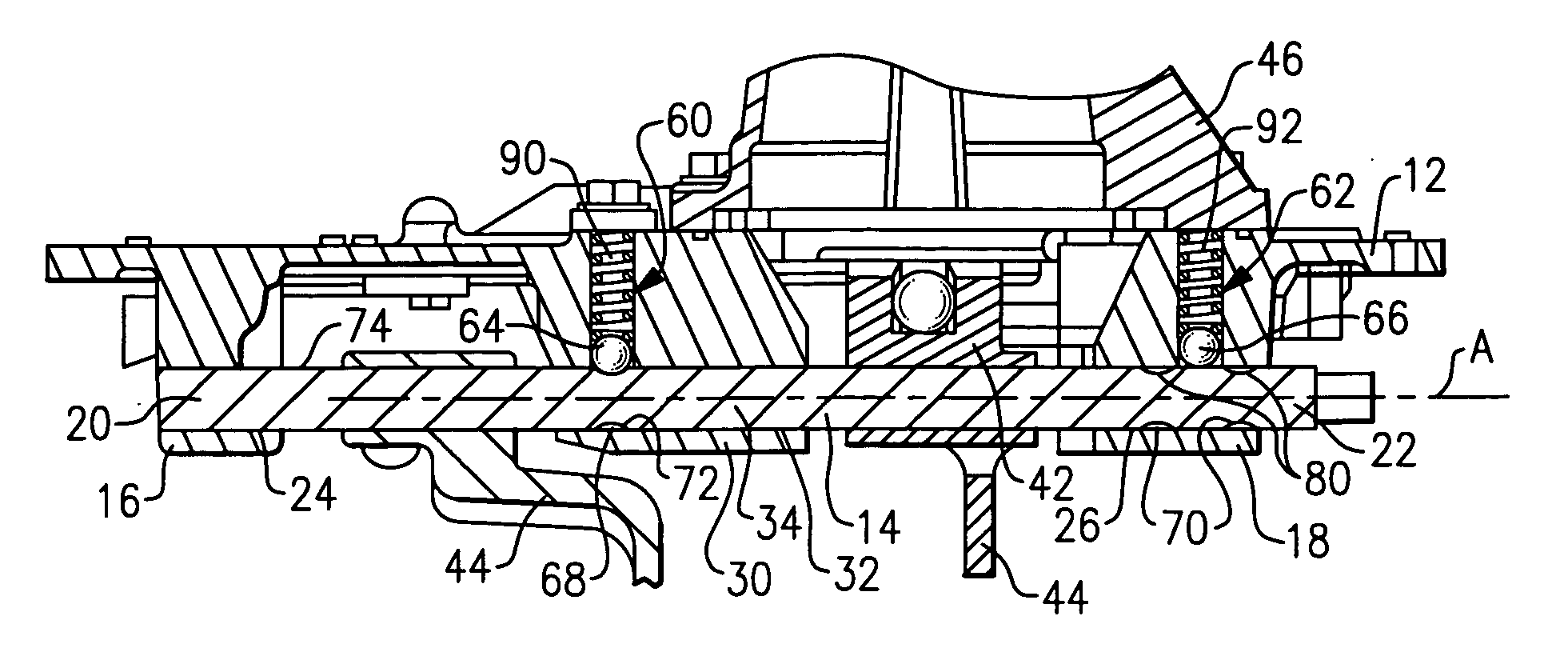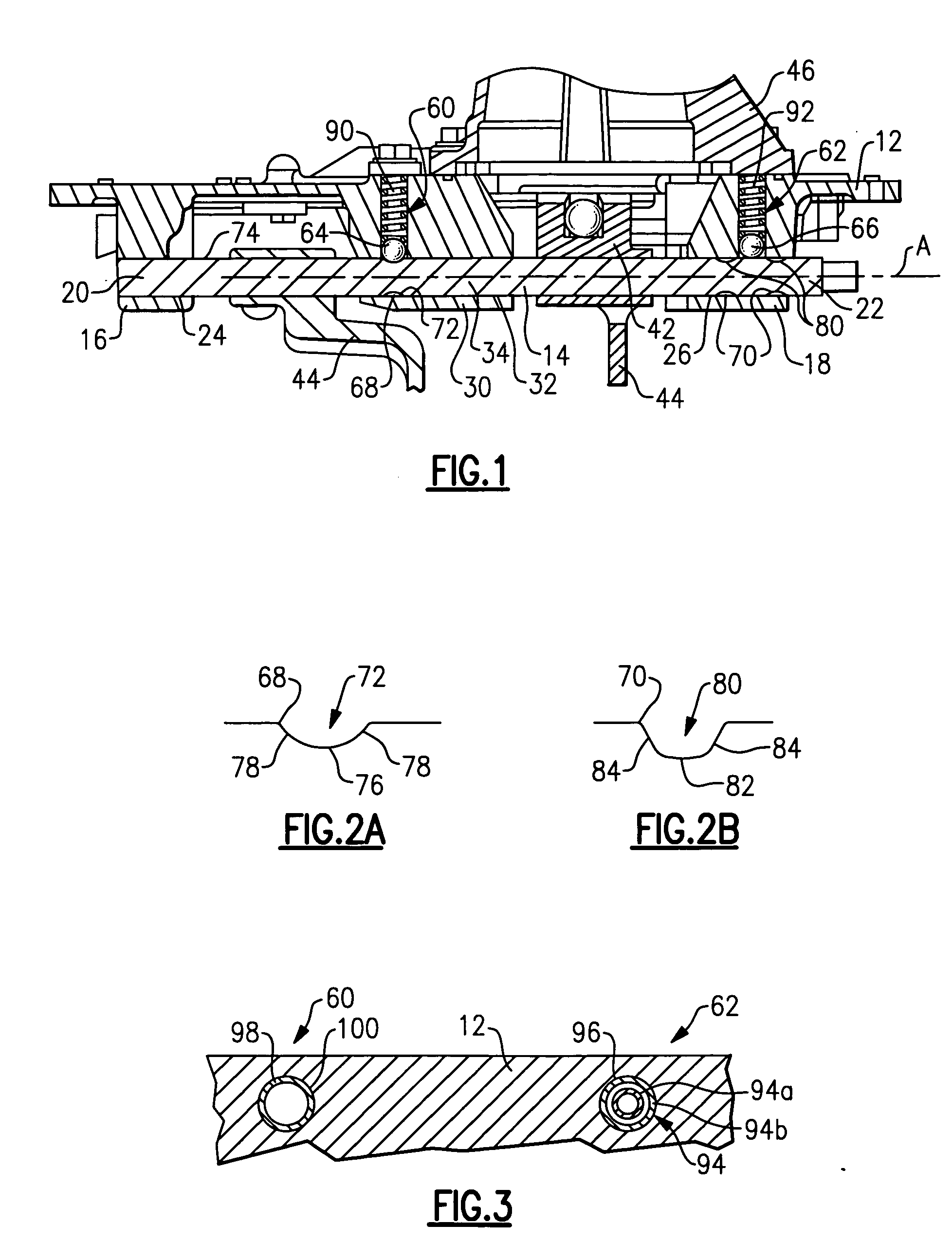Dual detent system
a dual-detent, shift-like technology, applied in the direction of mechanical control devices, process and machine control, instruments, etc., can solve the problems of affecting shift feel, requiring complicated controls, and requiring expensive solutions, so as to reduce the occurrence of jump-outs
- Summary
- Abstract
- Description
- Claims
- Application Information
AI Technical Summary
Benefits of technology
Problems solved by technology
Method used
Image
Examples
Embodiment Construction
[0013] A top cover 12 and a shift rail 14 as used in a vehicle transmission (not shown) are shown in FIG. 1. The top cover 12 includes a first support member 16 and a second support member 18. The shift rail 14 includes a first end portion 20 and a second end portion 22. The first end portion 20 is supported within a bore 24 formed in the first support member 16 and the second end portion 22 is supported within a bore 26 formed in the second support member 18.
[0014] The top cover 12 also includes a central support member 30 that is positioned between the first 16 and second 18 support members. The central support member 30 includes a bore 32 that receives a center portion 34 of the shift rail 14.
[0015] The shift rail 14 defines an axis A that extends along a length of the shift rail 14. The shift rail 14 is axially moveable within the bores 24, 26, 32 in response to shift requests.
[0016] A stub lever (not shown) is coupled to the shift rail 14 to communicate shift requests from a...
PUM
 Login to View More
Login to View More Abstract
Description
Claims
Application Information
 Login to View More
Login to View More - R&D
- Intellectual Property
- Life Sciences
- Materials
- Tech Scout
- Unparalleled Data Quality
- Higher Quality Content
- 60% Fewer Hallucinations
Browse by: Latest US Patents, China's latest patents, Technical Efficacy Thesaurus, Application Domain, Technology Topic, Popular Technical Reports.
© 2025 PatSnap. All rights reserved.Legal|Privacy policy|Modern Slavery Act Transparency Statement|Sitemap|About US| Contact US: help@patsnap.com


